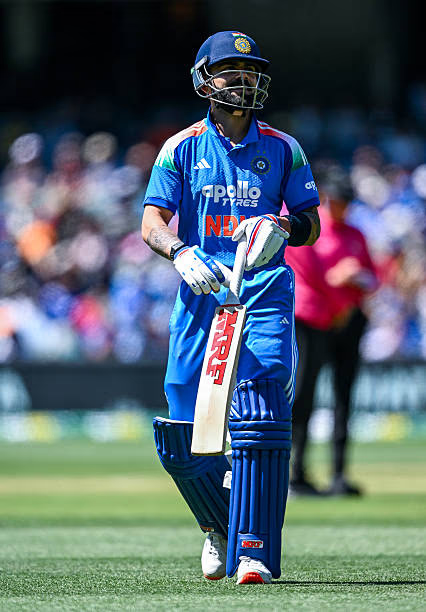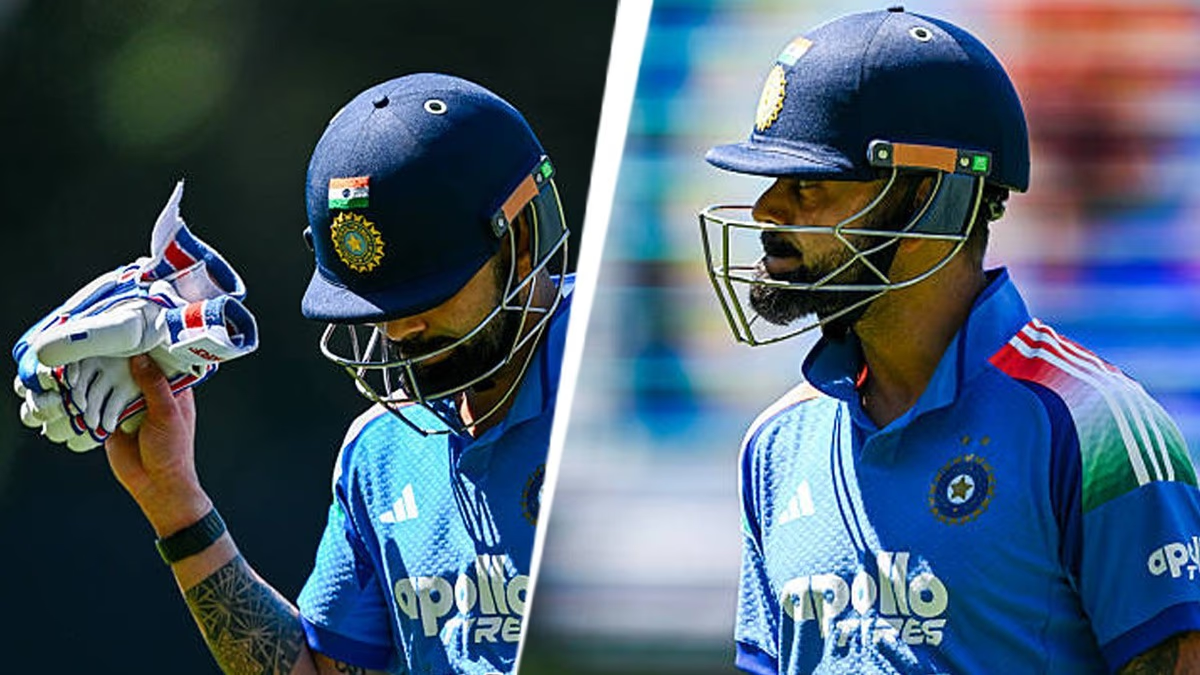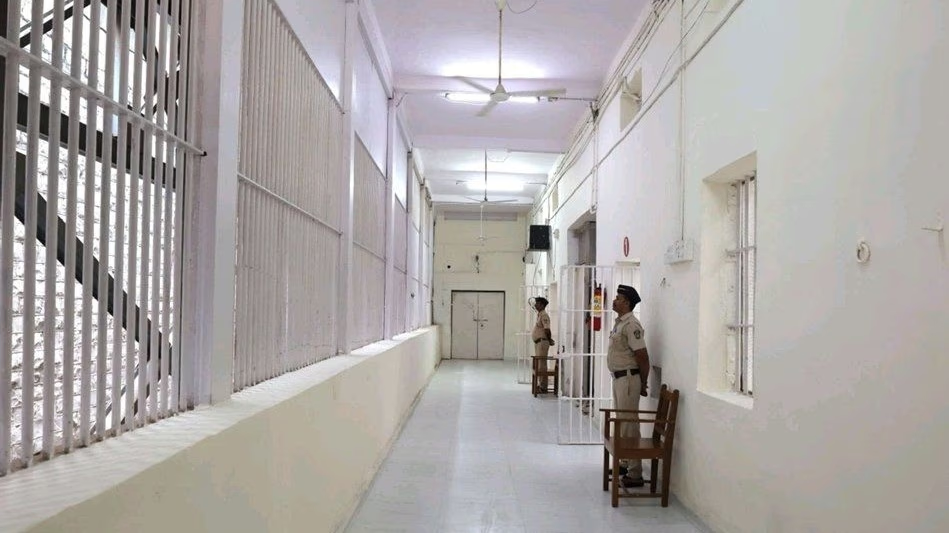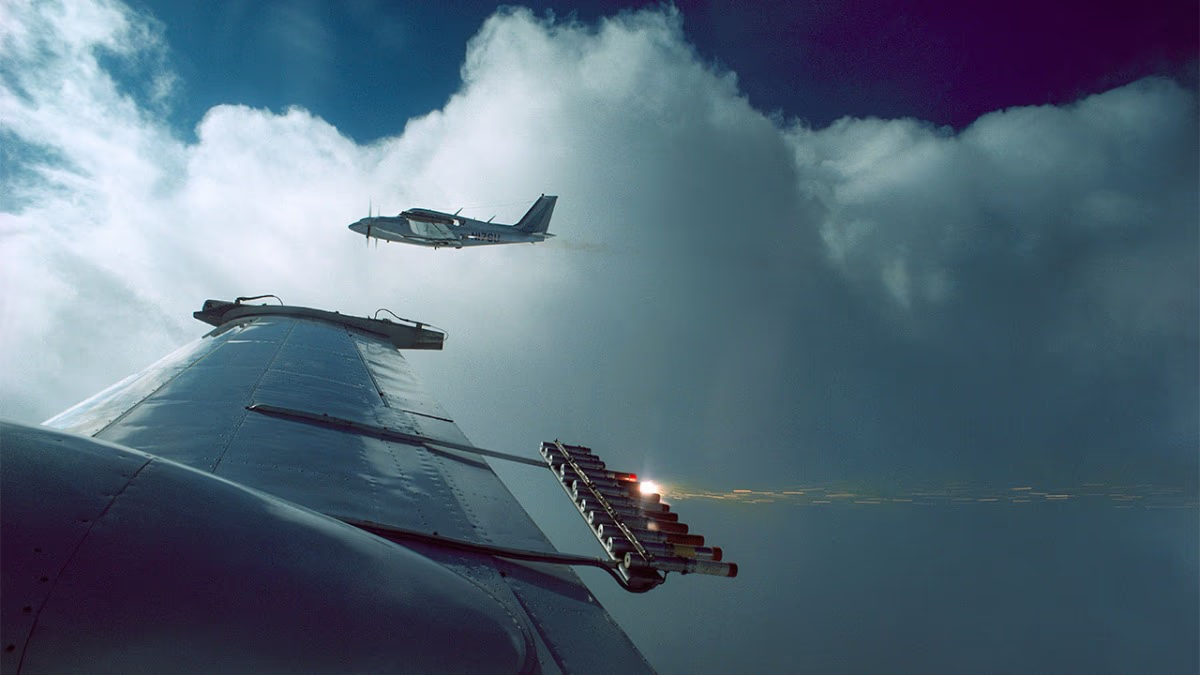The moment was different... Virat Kohli looked towards the Adelaide Oval crowd, a subtle smile played on his lips, and he raised his right hand in a silent goodbye. No anger, no disappointment—just a deep, penetrating calm. It seemed as if he wanted to say, 'Perhaps, we may not meet here again.'
Throughout Indian cricket history, many moments have become immortal, but this scene carried a reserved melancholy. This is the same Adelaide where Kohli played some of his most memorable innings—the ground where he scored a phenomenal
975
runs (Test+ODI+T20I) as a foreign batsman. The soil and air seemed tied to his name, yet this time, everything felt different.

Source: aajtak
Look at the Adelaide records
If we look at the list of highest run-getters in Adelaide (Test+ODI+T20I), Australian batsmen are dominant. Among the top 15, only one foreign name appears, and that is Virat Kohli's.
1. Ponting (AUS) 2188, 2. Clarke (AUS) 2040, 3. Border (AUS) 1933, 4. Warner (AUS) 1865, 5. Steve Waugh (AUS) 1379, 6. Mark Waugh (AUS) 1310, 7. Boon (AUS) 1263, 8. Dean Jones (AUS) 1166, 9. Langer (AUS) 1051, 10. Mike Hussey (AUS) 1024, 11. Taylor (AUS) 987, 12. Hayden (AUS) 982, 13.
Kohli (IND) 975
, 14. Bradman (AUS) 970, 15. Travis Head (AUS) 967 runs.
Kohli needed just 25 runs to reach 1000 runs at Adelaide and be the first non-Australian in the records here... but it wasn’t to be.
Out for a duck for the second straight match...
It was a first in Kohli's career, and perhaps that’s why when he waved at the crowd exiting the field, it felt more like the close of an era rather than just an out.
The Adelaide crowd rose to their feet, clapping not with ferocity, but with respect and affection—for the player who elevated Indian cricket to new heights. Yet, in Kohli's eyes, there was a glimpse of fatigue, not just from runs or form, but from the journey he poured his all into.
Social media buzzed immediately. The singular question everywhere—was this Kohli's cue? Is a farewell from One Day cricket near? People spoke not of his consecutive 'ducks' but of the gentle wave that touched millions.
After a lengthy seven-month break, Kohli's return to international cricket wasn’t smooth. He has retired from T20s and Tests. In the first ODI at Perth's Optus Stadium, he was out after facing 8 balls—attempting to drive a ball going away by Mitchell Starc. Three days later, in Adelaide, Javier Bartlett trapped him in a clever spell—first outside, then a full-length delivery coming in and Kohli was lbw.
The umpire raised his finger, Kohli briefly conversed with Rohit Sharma, and left without a review. The ball tracker showed—the ball struck the middle stump directly. As Kohli exited the field, the crowd was silent, still clapping. It felt like a farewell applause, filled with respect, gratitude, and a touch of sorrow.
Was this the last glimpse of Virat Kohli at Adelaide? Perhaps. But even if that's true, it's not an end—it's a quiet, dignified pause in a great story.
Adelaide Oval has always been a special ground in Virat Kohli's career. In January 2012, he played a resilient 116-run innings in the fourth Test here, announcing to the world that he is a true red-ball star. In the 2014-15 Border-Gavaskar series, his centuries of 115 and 141 proved Kohli's ability to change any game's direction.
In white-ball cricket too, Kohli has delivered memorable performances at Adelaide. His innings against Pakistan in the 2015 World Cup (
107 runs)
is still fresh in fans' memories. Yet, his potential final appearance on this storied ground felt different—his journey ended in just 4 balls.




